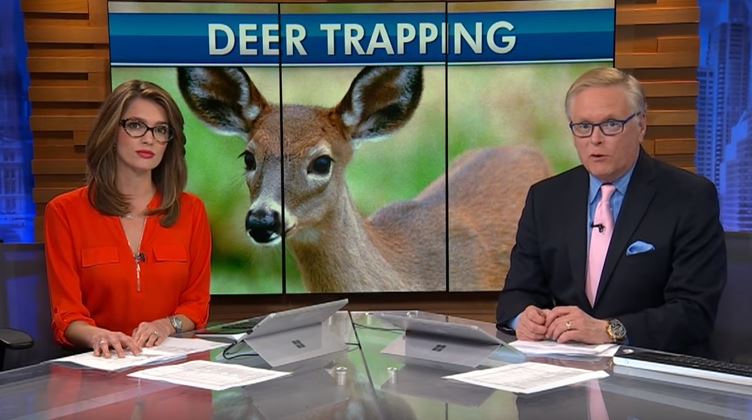Early Season is Best
It’s always exciting as fall approaches, but deer hunting in the early season can be downright frustrating, zapping that initial enthusiasm you took into the field. It’s nothing new for seasoned hunters. But regardless of whether you are new to the sport or an “have been around the block,” it takes more than luck to find your buck during the early season.
This was a tough year for deer in Texas. The first eight months of the year were dry. Summer is always dry, but this one seemed especially rough following a less than stellar spring. White-tailed deer no doubt found natural foods waning earlier than usual as summer progressed. It appeared fawn production was going to be lackluster, but bucks would be highly patternable as food would be the go-to play during the early part of the hunting season.

Hunting Season in View
“Range conditions had diminished somewhat with the long stretches of 100 degree weather and wind,” said Alan Cain, TPWD whitetail deer program leader. “The majority of the state had reasonable forb production and good brush green-up this past spring, which provided a good foundation of native forage to get deer off to a good start in terms of antler growth and fawn production. By late August, we were seeing preferred forbs becoming less available for deer.”
But all that changed on a dime. Hey, this is Texas. September rolled around and it started raining. And raining. And raining. As mid-month approached, many properties in the state received as much or more rain during the first two weeks of September as they had received the eight months prior. Of course.
It was dry enough to significantly reduce the fawn crop in many areas, but now it’s so wet and green that deer will not be easily-patterned on specific food sources. High quality, natural foods are now found everywhere. Did I mention that the acorns that are out there are now beginning to fall? To add insult to injury for early season deer hunters, mosquitos populations are, well, robust.

Early Season is GREEN
“Hunting might be a little tough with the exceptional rainfall in September that has created a giant food plot of native forage across the state,” said Cain. It’s a bittersweet situation for those deer hunting in the early season. Conditions have helped the deer herd; makes it much more difficult for hunters.
There are about 4.6 million deer in Texas but good eats can literally be found anywhere and everywhere across the landscape. When food is so abundant it’s as if the deer herd simply dries up. “Deer may be visiting feeders less frequently with the available forage, so hunters might rely on information gathered recently on their trail cameras to help narrow down windows of opportunity as to when deer are visiting feeder and blind locations.”
The influx of new groceries on the ground should provide a boost of nutrition heading into the fall. It should also give wildlife managers some relief after range conditions across much of the state heading out of the summer doldrums began to decline.
5 Hunting Tips for the Early Season
Hunting white-tailed deer during the early season offers its own unique set of challenges. Not only are natural deer foods abundant, making deer more difficult to pattern, but so are bugs, potentially making life miserable. On the plus side, deer haven’t been hunted for the better part of a year so a nimble hunter has the chance scout, locate and sneak in for the kill.
If you haven’t done anything yet — you’re most definitely late. Regardless of whether you’ve been living in a stand this year or just getting ready to head afield, here are a few things to consider to improve the odds of you tagging a buck during this season:
1. Use Game Cameras
Game cameras are like the most effective scouting tools that we as hunters have at our disposal. They work well whether using them to identify early season deer hunting action or trying to pattern the movement of deer during the late season. The take home message is they can be in more places than us and they keep score.
2. Early Season Patience
Wait for it, grasshopper. The season is just getting underway in many areas and that has you pumped to go jump in your favorite stand and shoot a monster buck, but don’t rush it! When weather conditions are wrong for hunting a particular stand, just stay away. You will leave with nothing, except getting busted by the very deer you are attempting to hunt. Wait for the right time or you risk pushing the buck you are chasing right into another hunter’s lair.
3. Scent Control
This goes right along with number two. Don’t do everything right only to phone it in on scent control. Some hunters really stink (I know, I know) when it comes to mitigating scent, but it’s the easiest way for a buck to know you are there, stop, and simply walk the other way (with you being none the wiser).
4. Control Insects
Think about this prior to climbing into your favorite early season deer hunting setup. It is early fall, after all. Whether hunting from up high or down low, you do not need to be more uncomfortable than trying remain semi-motionless while sitting on a less-than-comfortable seat for half a day.
5. Early Season Evening Hunts
Just as in life, timing is everything in deer hunting. If you have limited time for deer hunting then make sure you give priority to evening hunts rather than morning hunts when hunting deer during the early season. If you are not bound by time, well, then lucky you. During the early season, a hunter is more likely to encounter a whitetail buck during the afternoon/evening hunt. It’s also easier to get into a stand without bumping deer, which is step one when trying to tag an early season buck.









